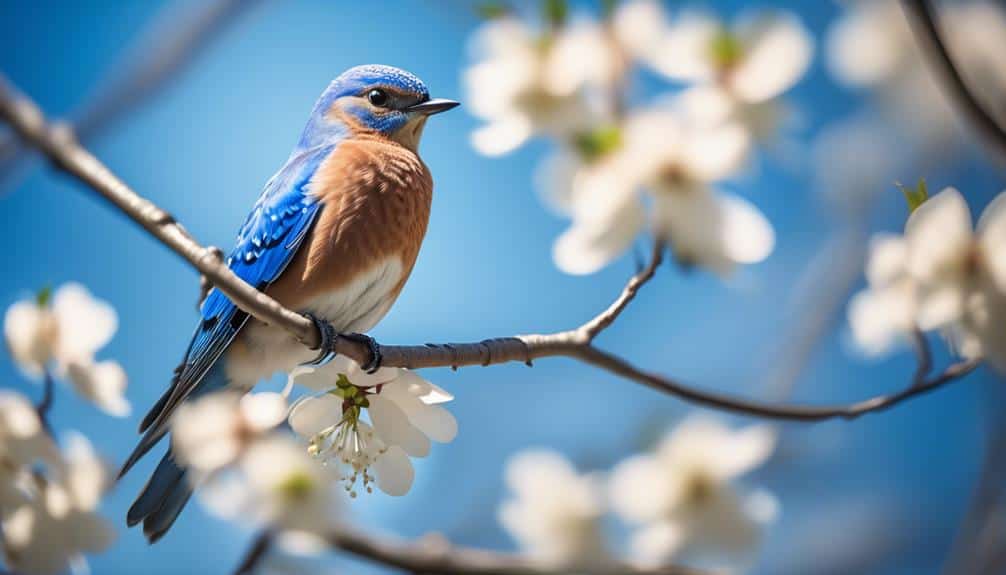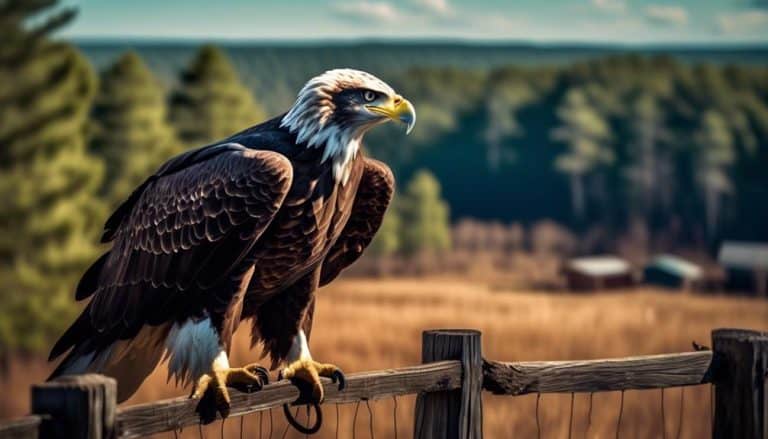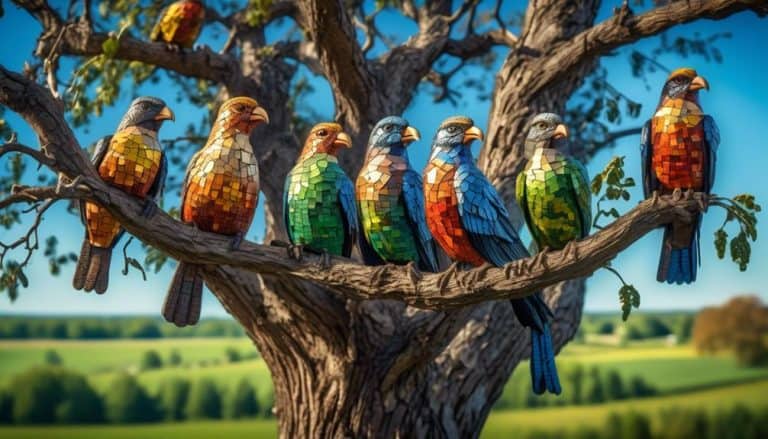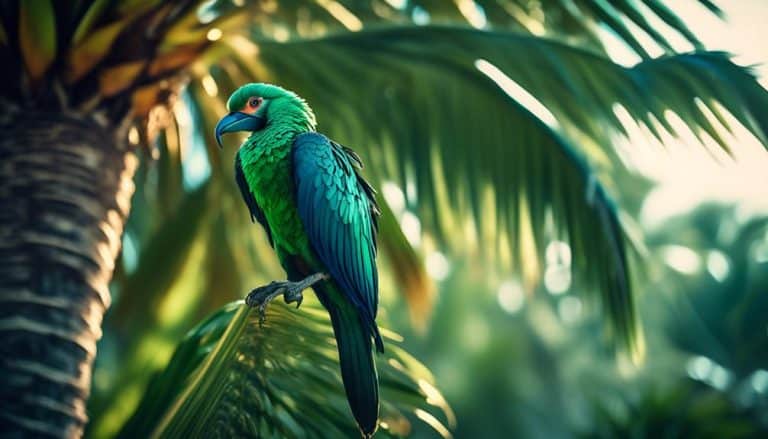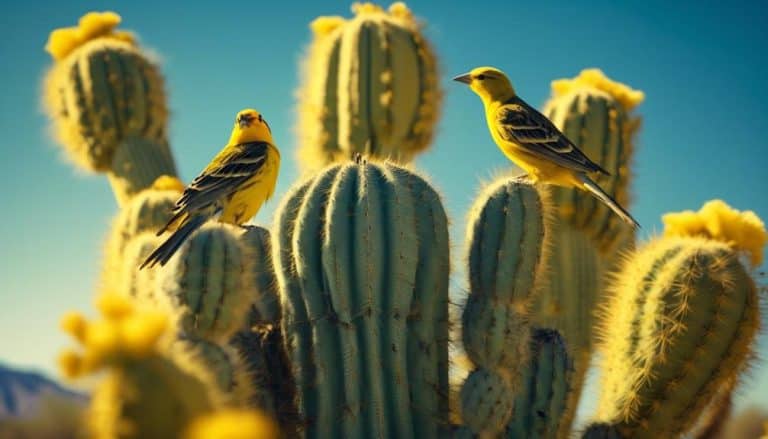I've always heard that blue birds are a rare sight in Ohio, but lately, I've been wondering if that's really true.
As I ventured into the world of birdwatching, I couldn't help but notice a few glimpses of vibrant blue feathers fluttering amidst the trees.
Could it be possible that blue birds are not as elusive in Ohio as they are believed to be?
Well, let's take a closer look and unravel the mystery together.
Habitat and Distribution
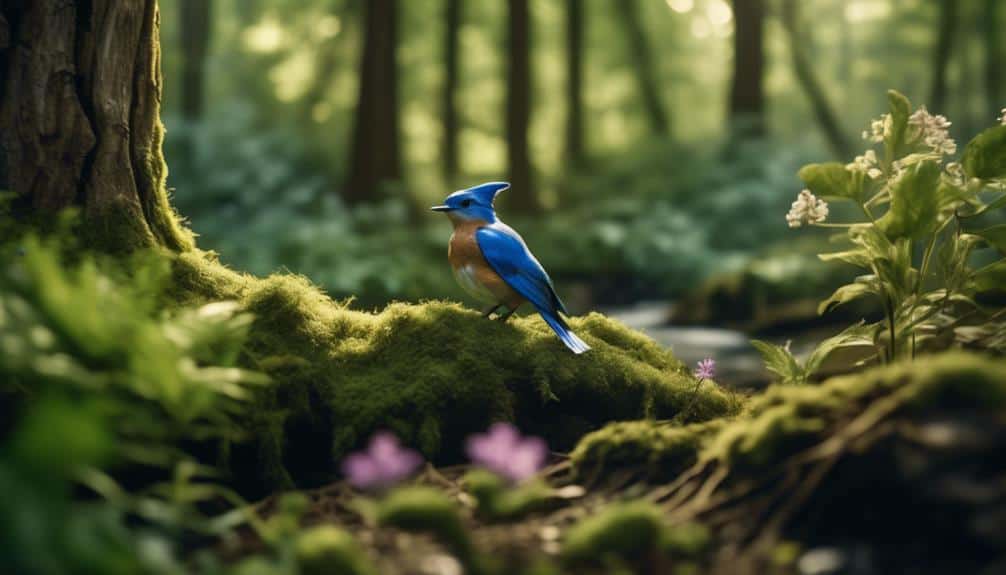
Blue birds in Ohio are primarily found in open grasslands and meadows throughout the state. These habitats provide the ideal conditions for blue birds to thrive, as they offer an abundance of food sources such as insects and berries.
When it comes to migration patterns, blue birds in Ohio are known to be partially migratory. This means that while some individuals may choose to migrate to warmer regions during the winter months, others may choose to stay in Ohio year-round. The decision to migrate or stay is often influenced by factors such as food availability and weather conditions.
In terms of nesting habits, blue birds in Ohio are cavity nesters. They prefer to build their nests in pre-existing cavities, such as tree cavities or nest boxes. These nest sites provide protection from predators and the elements. Blue birds are known to be highly territorial during the nesting season, defending their chosen nest site from other blue birds and potential threats.
Physical Characteristics
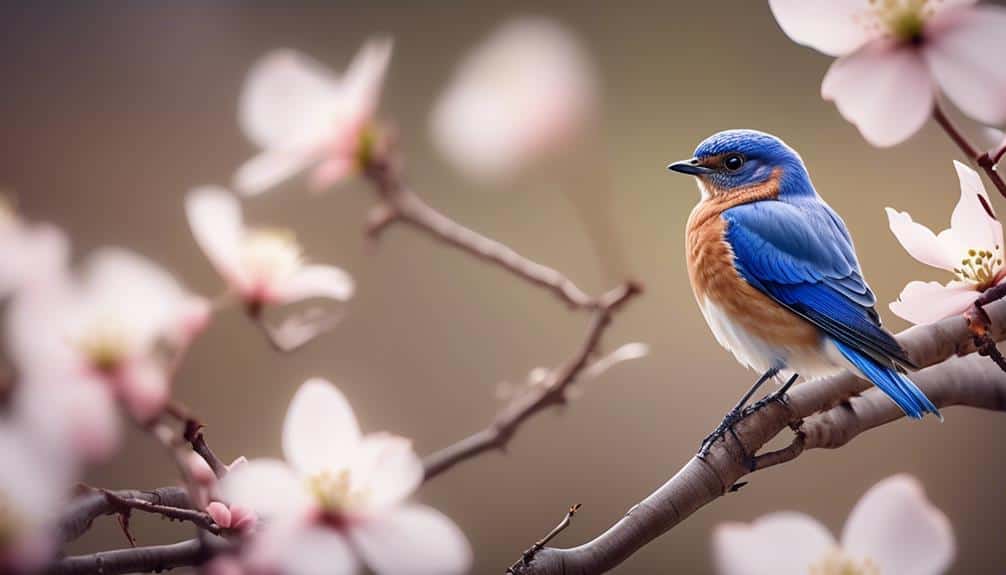
The physical characteristics of blue birds in Ohio reveal adaptations that enable them to thrive in their preferred grassland and meadow habitats. Blue birds in Ohio belong to the species Sialia sialis, commonly known as the Eastern Bluebird. These birds are small in size, measuring around 6 to 7 inches in length, with a wingspan of approximately 10 to 13 inches. They have a round and plump body, with a short tail and a sturdy bill.
The plumage of blue birds in Ohio is vibrant and striking, with males displaying a bright blue color on their upperparts and a rusty orange breast. Females, on the other hand, have a more subdued blue color with a pale orange breast. This sexual dimorphism plays a crucial role in their mating behavior, as males use their vibrant plumage to attract potential mates during courtship displays.
When it comes to nesting habits, blue birds in Ohio are cavity nesters. They prefer to build their nests in natural cavities, such as tree hollows or abandoned woodpecker holes. However, due to habitat loss and competition for nesting sites, blue birds readily accept artificial nest boxes provided by conservation efforts. The female blue bird constructs the nest using grasses, twigs, and other plant materials, while the male helps in gathering nesting materials. The nesting season typically occurs between March and August, with the female laying around four to six pale blue eggs.
Behavioral Patterns
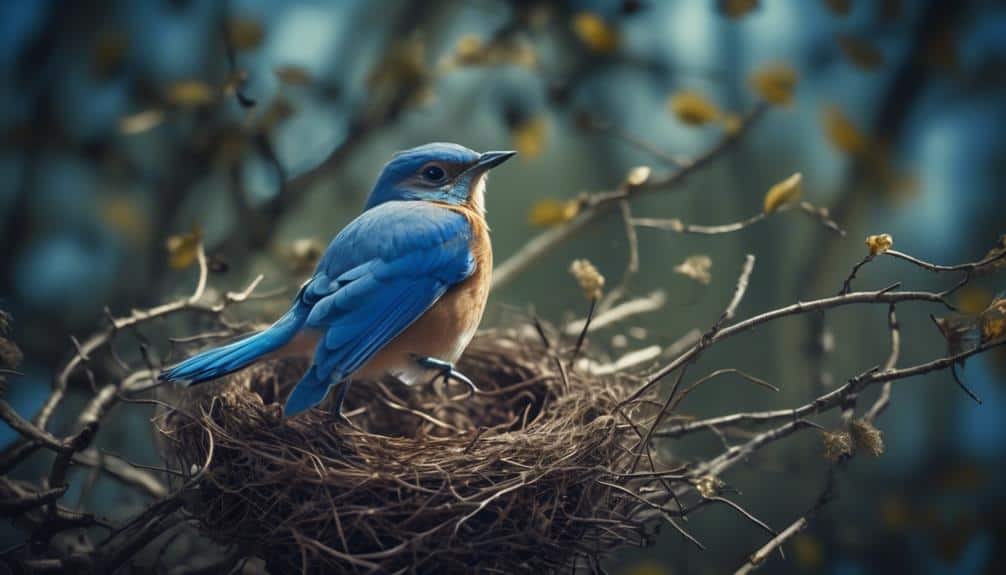
Do blue birds in Ohio exhibit distinct behavioral patterns that contribute to their survival in grassland and meadow habitats? To answer this question, it's essential to understand their nesting and feeding habits.
Blue birds in Ohio have specific nesting habits that aid in their survival. They prefer to build their nests in natural cavities, such as tree hollows or abandoned woodpecker holes. However, due to the scarcity of suitable nesting sites, they readily accept artificial nest boxes. These boxes are typically placed in open areas with low vegetation cover, allowing blue birds to easily access their nests and protect them from predators. Additionally, these birds exhibit strong site fidelity, often returning to the same nesting location year after year.
When it comes to feeding habits, blue birds in Ohio primarily feed on insects and berries. They're skilled hunters, capturing insects by perching on branches and flying out to catch their prey in mid-air. This behavior is particularly important during the breeding season when they need to provide a steady supply of insects to their nestlings. Blue birds are also known to consume a variety of berries, including those from dogwood and sumac plants, especially during the winter months when insects are scarce.
Conservation Efforts
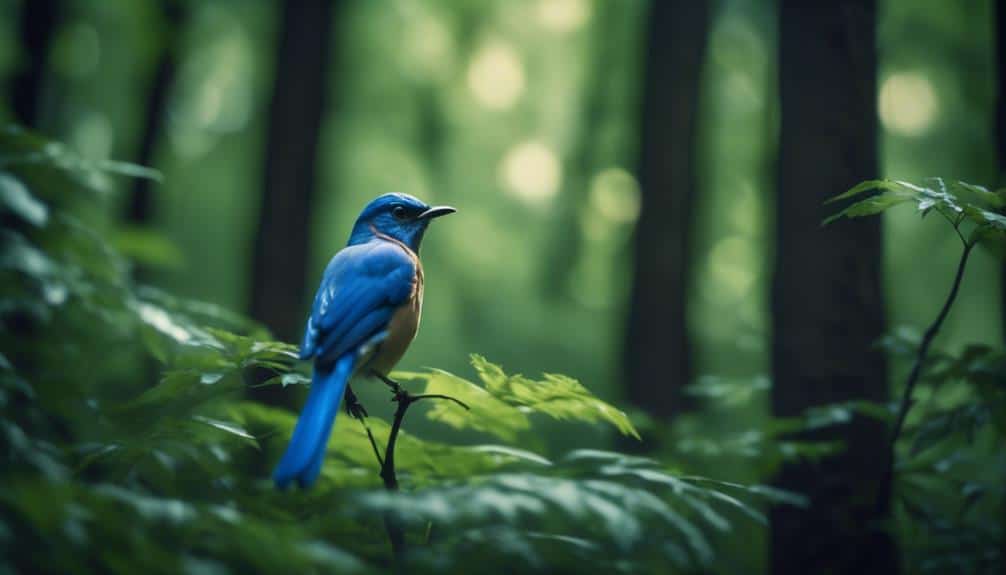
Conservation efforts aimed at protecting the blue bird population in Ohio include habitat preservation, nest box programs, predator control measures, and community engagement.
Habitat Preservation: One of the key conservation strategies is preserving and restoring the natural habitats of blue birds. This involves protecting open meadows, grasslands, and woodlands where blue birds nest and forage for food. By maintaining these habitats, we ensure that blue birds have suitable areas to breed and raise their young.
Nest Box Programs: Installing nest boxes is another important conservation measure. These specially designed boxes mimic the natural tree cavities that blue birds use for nesting. By providing these artificial nesting sites, we can increase the breeding success of blue birds and help stabilize their populations.
Predator Control Measures: Predators pose a significant threat to blue bird populations. Implementing predator control measures, such as installing baffles or predator guards on nest boxes, can help reduce predation rates and protect blue bird nests from raccoons, snakes, and other potential threats.
Community Engagement: Engaging the community in blue bird conservation efforts is vital. Educating and raising awareness about the importance of blue birds and their conservation needs can inspire individuals to take action, whether it's by participating in citizen science projects, volunteering for nest box monitoring, or creating blue bird-friendly landscapes in their own yards.
Tips for Attracting Blue Birds
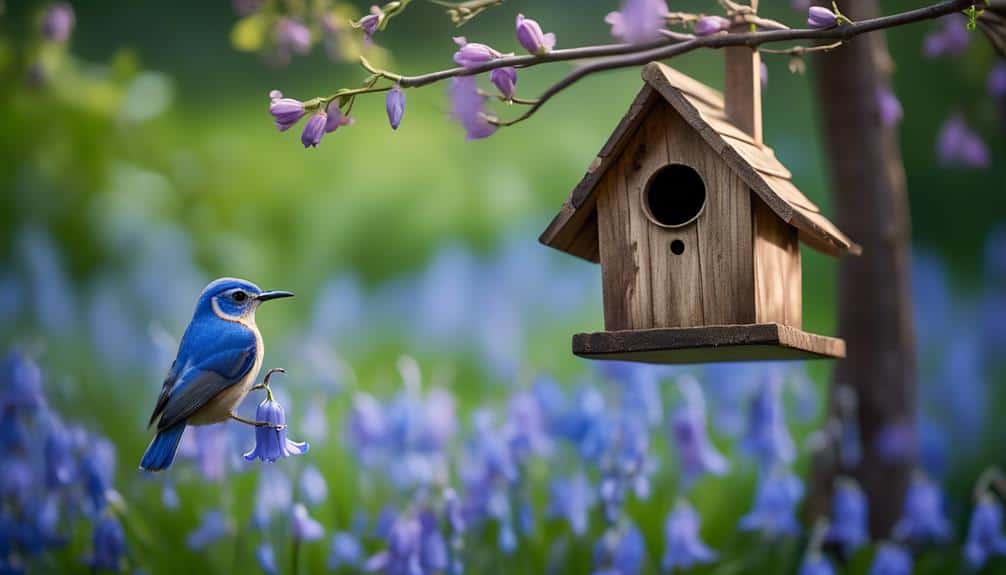
To successfully attract blue birds, it's important to understand their specific habitat preferences and implement suitable strategies. Bluebirds prefer open habitats with short grass and scattered trees or shrubs. Providing suitable nesting boxes is crucial for attracting bluebirds, as they prefer cavities for nesting. These boxes should be placed in open areas, at a height of about five to ten feet above the ground, and facing towards an open field or meadow.
Ensuring a proper food source is also essential for attracting bluebirds. They primarily feed on insects, especially during the breeding season. To attract them, consider planting native plants that attract insects, such as fruit-bearing shrubs or trees. Providing a water source, such as a birdbath, is also beneficial for attracting bluebirds.
To increase the chances of bluebirds staying and nesting in your area, it's important to create a suitable environment for them. Maintaining a natural landscape with native plants, minimizing pesticide use, and avoiding excessive lawn maintenance are all important steps to attract bluebirds. Additionally, leaving dead trees or snags in the area can provide natural nest sites for bluebirds.
Frequently Asked Questions
How Do Blue Birds Communicate With Each Other?
Blue birds communicate with each other through a variety of vocalizations and visual displays. They use specific calls during mating rituals to attract a mate. Climate change can impact their communication patterns by altering their habitats and affecting their ability to find suitable mates.
What Is the Lifespan of a Blue Bird?
The lifespan of a blue bird can vary depending on various factors. These factors include habitat, availability of food, and predation. Understanding these influences can provide valuable insights into the lifespan of blue birds.
Are Blue Birds Native to Ohio?
Blue birds are native to Ohio, and their migration patterns play a crucial role in their conservation efforts. Understanding their movements helps us protect their habitats and ensure their survival in the state.
What Are the Predators of Blue Birds in Ohio?
I am amazed by the intricate predator-prey dynamics in Ohio. The impact on blue bird populations is significant. In order to understand the threats they face, it is crucial to identify their predators.
How Do Blue Birds Defend Their Nests From Intruders?
Blue birds defend their nests from intruders by using various strategies such as aggressive behavior, vocalizations, and physical attacks. They also construct their nests in concealed locations and have specific nesting habits to minimize the risk of predation.
Conclusion
In conclusion, blue birds in Ohio are a fascinating species with unique physical characteristics and behavioral patterns.
Their habitat and distribution are important factors to consider in conservation efforts.
One example that highlights the significance of these efforts is the case study of a local community that successfully attracted blue birds by providing nesting boxes and creating suitable habitats.
By understanding their needs and implementing conservation strategies, we can continue to enjoy the presence of blue birds in Ohio for generations to come.

